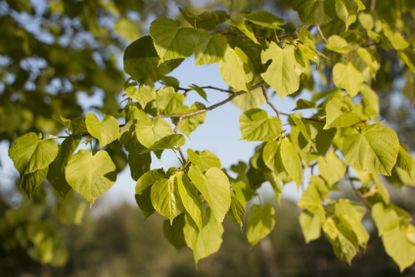Cold Hardy Deciduous Trees: What Are Good Deciduous Trees For Zone 3


If you live in one of the colder parts of the country, the trees you plant will have to be cold hardy. You may think you are limited to evergreen conifers. However, you also have quite a few cold hardy deciduous trees to choose between. If you would like to know the best types of hardy deciduous trees for zone 3, read on.
Zone 3 Deciduous Trees
The USDA developed a zone system. It divides the country into 13 zones according to the coldest annual temperatures. Zone 1 is the coldest, but zone 3 is about as cold as it gets in the continental U.S., registering winter lows of minus 30 to minus 40 degrees F. (-34 to -40 C.). Many of the most northern states like Montana, Wisconsin, North Dakota, and Maine include regions that are in zone 3. While some evergreen trees are sufficiently cold hardy to survive in these extremes, you’ll also find zone 3 deciduous trees. Since deciduous trees go dormant in winter, they have an easier time making it through the windy winters. You’ll find more than a few cold hardy deciduous trees that will thrive in this zone.
Deciduous Trees for Cold Climates
What are the top deciduous trees for cold climates? The best deciduous trees for zone 3 in your region are likely to be trees that are native to the area. By choosing plants that naturally grow in your area, you help maintain nature’s biodiversity. You also assist native wildlife that requires those trees for survival. Here are a few deciduous trees native to North America that thrive in zone 3: American mountain ash (Sorbus americana) is a great choice for a backyard tree. This little tree produces berries in autumn that serve as food for many native birds, including cedar waxwings, grosbeaks, red-headed woodpeckers, and thrush. Other cold hardy deciduous trees that bear fruit in zone 3 include the wild plum (Prunus americana) and the eastern serviceberry (Amelanchier canadensis). Wild plum trees serve as nesting spots for wild birds and feed wildlife like fox and deer, while birds love the summer ripening serviceberries. You might also plant beech trees (Fagus grandifolia), tall, elegant trees with edible nuts. The starchy nuts feed many types of wild animals, from squirrels to porcupines to bears. Likewise, the nuts of butternut trees (Juglans cinerea) provide food for wildlife. Ash trees (Fraxinus spp.), aspen (Populus spp.), birch (Betula spp.), and basswood (Tilia americana) are also excellent deciduous trees for cold climates. Various types of maple (Acer spp.), including boxelder (A. negundo) and willow (Salix spp.) are also deciduous trees for zone 3.
Gardening tips, videos, info and more delivered right to your inbox!
Sign up for the Gardening Know How newsletter today and receive a free download of our most popular eBook "How to Grow Delicious Tomatoes."

Teo Spengler has been gardening for 30 years. She is a docent at the San Francisco Botanical Garden. Her passion is trees, 250 of which she has planted on her land in France.